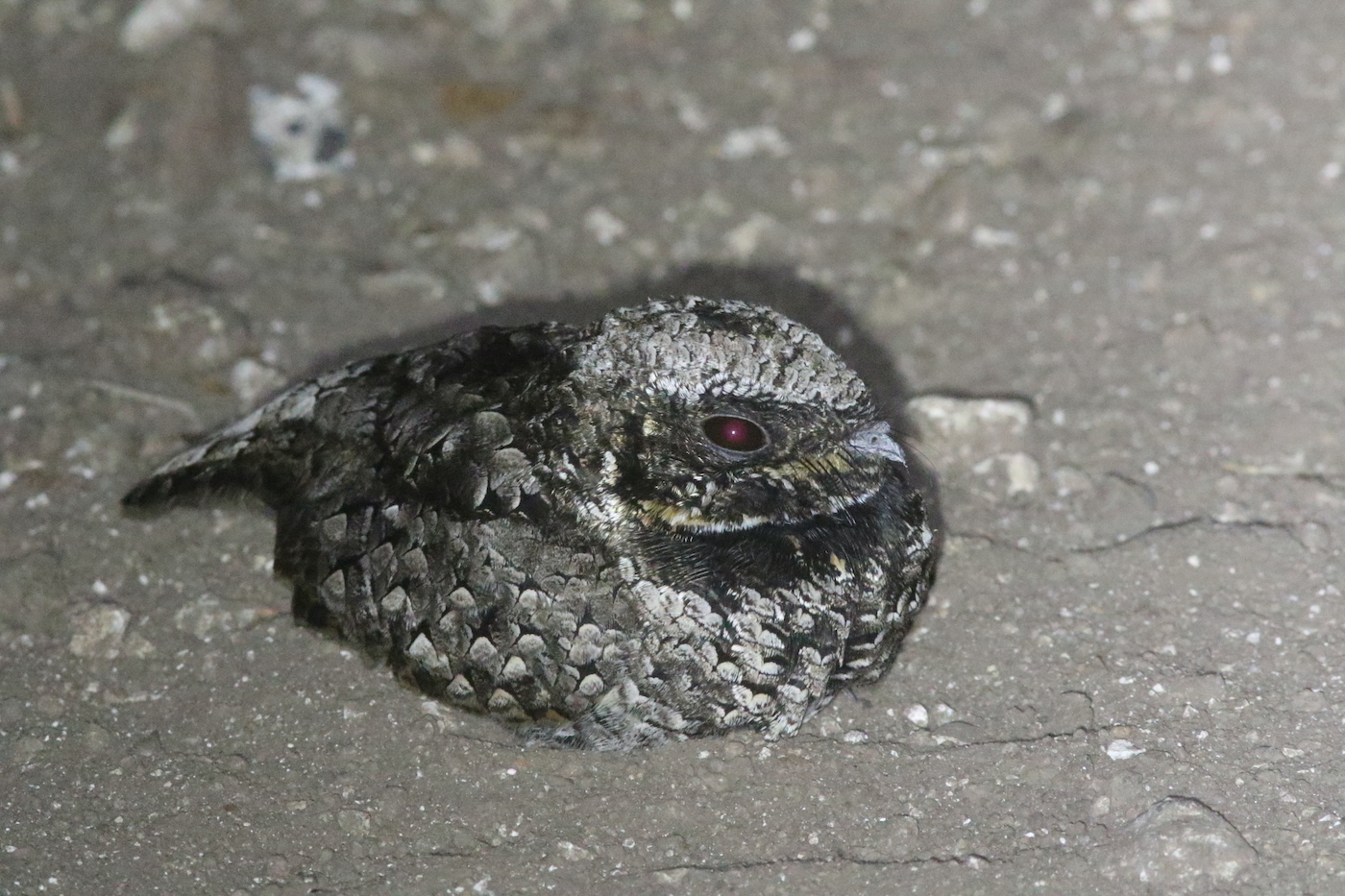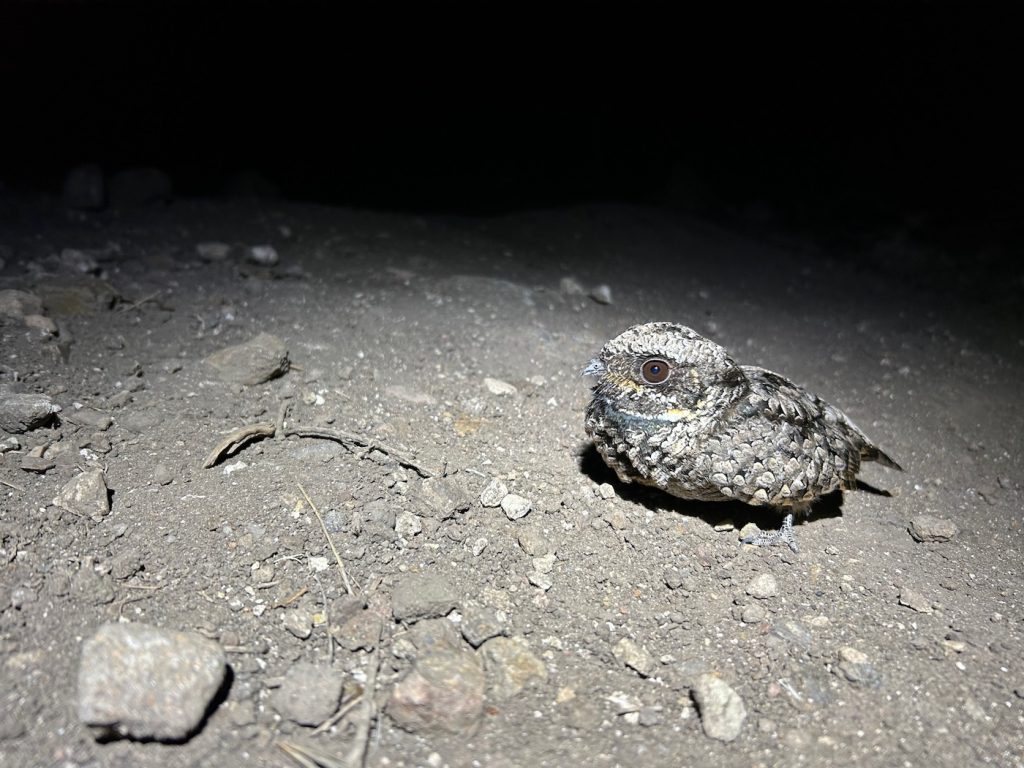The Sleeping One

Descending San Miguel Hill at a feverish pace, I’d just left a freshly soddened Green Mountain to the west in my rearview mirror. San Miguel Island always delivering a diverse mix of unpredictable weather patterns.
Green Mountain was cloaked in dewy fog and swept in 20 mph northwest winds. It felt like sideways rain as moisture pelted my left side, unexpectedly soaking me, but that’s what to expect from the most exposed isle in the Channel Islands National Park.
Shaking off beads of moisture, I quickly warmed up while ascending San Miguel Hill to the east. The soft sand at the apex of the hill forced me to work a little harder before passing the weather apparatus at its 831-foot summit. My stride quickened on the descent, but then I saw eyes reflecting off my headlamp beaming down the narrow single track.
For all my nighttime strolls on the Channel Islands National Park, my initial reaction was that it was an island fox foraging under the stars. However, this felt different, and it was. Island foxes possess a curious head bob, and they blink at any light. When I saw this pair of eyes, I immediately noticed the eyes were set lower to the ground, and there was no movement at all.
When I sensed something different, I instantly slowed and sat down in the narrow trail. It took me a minute to figure out what I was seeing, but when I realized it was a nocturnal poorwill, I didn’t move for several minutes. With just the beam of my headlamp and the flash from my camera. I scooched on my rump into position, eliminating any potential impact tremor. I had to photograph it in manual mode and was able to get a couple of images of such an unusual bird on the most remote islet in the Northern Chain.
Sleepless Nights
It was a rare occasion. I was wide awake at 2 am, and I went for a very short trail run, maybe four miles. After leaving the campground in Scorpion Canyon on Santa Cruz Island, I quickly ascended toward Cavern Point where the air was warmer.
Suddenly, I was keeping pace with a busy, nocturnal island spotted skunk who did not want to give up the trail, so I stayed back just a little until the one-pound skunk veered off into a shallow gully that eventually fed to Scorpion Canyon.
As I loped along, my headlamp burning bright, more eyes reflected along the rolling marine terrace. I slowed to a halt and crawled on all fours to what was another poorwill. It was killing me, because I didn’t have my camera, but I was super stoked to see two of the most rarely seen creatures on the Northern Channel Islands.

I didn’t want to startle the poorwill. It was enjoying a warm spot along the trail while in between nabbing insects. I carefully navigated a path through the brush, keeping the poorwill in its comfy spot.
Not to be denied, I came prepared the following night with my camera and a light I use for kayaking and exploring dark, dank sea caves below those windswept marine terraces. It’s so difficult predicting what wildlife will do, but sometimes certain species are habitual, and I was banking on that. That poorwill was nearly resting in the exact same spot from the night before.
Once I saw its eyes, I shut everything down, and only used the lowest beam on my headlamp. I wanted it to remain comfortable as I inched closer. When I was within range of my 300mm lens, I moved my sea cave light toward the nocturnal bird and captured a couple of quality images of the poorwill.
Southerly Slopes
Scorpion Canyon was chilly, maybe 45 degrees on an early evening just after the annual time change. I bundled up for a walk, fully equipped with camera and lights. Literally 100 feet up the canyon and the temperature warmed 15 degrees.
Poorwills typically enjoy southerly slopes for roosting, warming up, dust baths, and even nesting. The road above the ranger housing was ideal for that. As I walked on the dusty track, another poorwill bedded down in the dirt, living up to its nocturnal behavior.
I lied down about 25 feet from it and inched forward. On elbows and toes, I got to within six feet, and then the poorwill demonstrated some more of its behavior. If they feel threatened, they’ll open their mouths and huff and puff. It sauntered forward, almost waddling in the dirt. It then settled again even closer than before.
But as fall melds into winter and the nights continue to cool, poorwills will demonstrate some physical characteristics that are mind boggling. Their cryptic feathers camouflage them within their arid, rocky habitats making them difficult to see. They also drift off, sleeping and lowering their body temperature to 41 degrees, and reducing their oxygen consumption more than 90 percent. Native Americans such as the Hopi named poorwills “the
sleeping one.”
And as the night wore on, the lone poorwill went into a state of torpor. It closed its eyes and slept, but I also began to doze. It was time to get off the dirt and hike back to my tent.







You must be logged in to post a comment.